Hou 20 januari vrij in jullie agenda, dan is namelijk de jaarvergadering van de afdeling.
Meer info volgt.
Hou 20 januari vrij in jullie agenda, dan is namelijk de jaarvergadering van de afdeling.
Meer info volgt.
Via deze weg willen wij graag onder de aandacht brengen dat op dinsdag 9 december de laatste afdelingsbijeenkomst van 2025 gehouden zal worden.
Vanaf dinsdag 6 januari 2026 zullen de afdelingsbijeenkomsten weer hervatten, zoals gebruikelijk vanaf 20:00 bij Eetcafé Spech in Spaubeek.
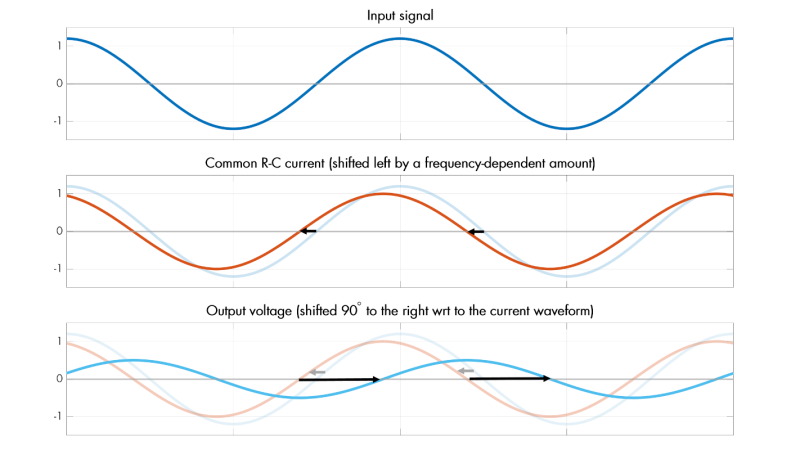
One of the major difficulties in studying electricity, especially when compared to many other physical phenomena, is that it cannot be observed directly by human senses. We can manipulate it to perform various tasks and see its effects indirectly, like the ionized channels formed during lightning strikes or the resistive heating of objects, but its underlying behavior is largely hidden from view. Even mathematical descriptions can quickly become complex and counter-intuitive, obscured behind layers of math and theory. Still, [lcamtuf] has made some strides in demystifying aspects of electricity in this introduction to analog filters.
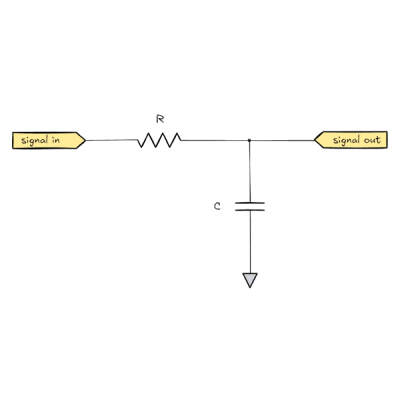 The discussion on analog filters looks at a few straightforward examples first. Starting with an resistor-capacitor (RC) filter, [lcamtuf] explains it by breaking its behavior down into steps of how the circuit behaves over time. Starting with a DC source and no load, and then removing the resistor to show just the behavior of a capacitor, shows the basics of this circuit from various perspectives. From there it moves into how it behaves when exposed to a sine wave instead of a DC source, which is key to understanding its behavior in arbitrary analog environments such as those involved in audio applications.
The discussion on analog filters looks at a few straightforward examples first. Starting with an resistor-capacitor (RC) filter, [lcamtuf] explains it by breaking its behavior down into steps of how the circuit behaves over time. Starting with a DC source and no load, and then removing the resistor to show just the behavior of a capacitor, shows the basics of this circuit from various perspectives. From there it moves into how it behaves when exposed to a sine wave instead of a DC source, which is key to understanding its behavior in arbitrary analog environments such as those involved in audio applications.
There’s some math underlying all of these explanations, of course, but it’s not overwhelming like a third-year electrical engineering course might be. For anyone looking to get into signal processing or even just building a really nice set of speakers for their home theater, this is an excellent primer. We’ve seen some other demonstrations of filtering data as well, like this one which demonstrates basic filtering using a microcontroller.
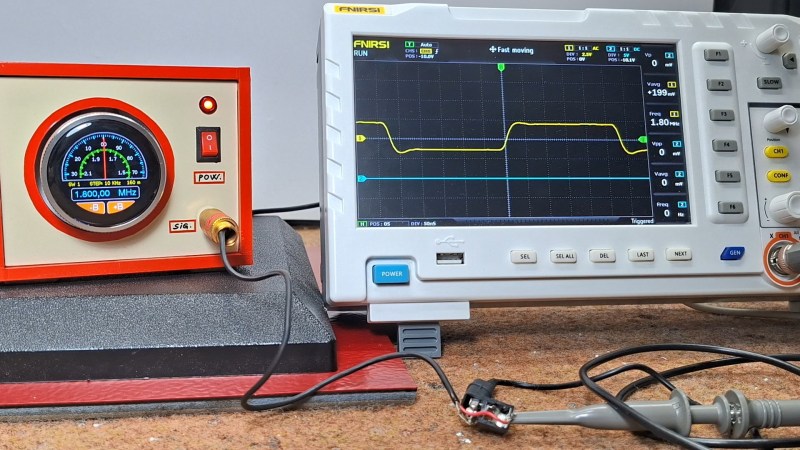
Not every project has to be complicated– reinventing the wheel has its place, but sometimes you find a module or two that does exactly what you want, and the project is more than halfway done. That the kind of project [mircemk]’s Simple Retro Style VFO is — it’s a variable frequency oscillator for HAM and other use, built with just a couple of modules.
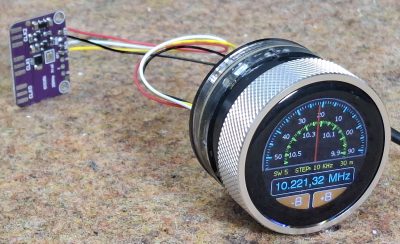
The modules in question are the SI5351 Clock Generator module, which is a handy bit of kit with its own crystal reference and PLL to generate frequencies up to 150 MHz, and the Elecrow CrowPanel 1.28inch-HMI ESP32 Rotary Display. The ESP32 in the CrowPanel controls the SI5351 module via I2C; control is via the rest of the CrowPanel module. This Rotary Display is a circular touchscreen surrounded by a rotary display, so [mircmk] has all the inputs he needs to control the VFO.
To round out the parts count, he adds an appropriate connector, plus a power switch, red LED and a lithium battery. One could include a battery charger module as well, but [mircmk] didn’t have one on hand. Even if he had, that still keeps the parts count well inside the single digits. If you like video, we’ve embedded his about the project below; if not the write up on Hackaday.io is upto [mircmk]’s typical standard.
People have been using the SI5351 to make VFOs for years now, but the addition of the round display makes for a delightfully retro presentation.
Thanks to [mircmk] for the tip.
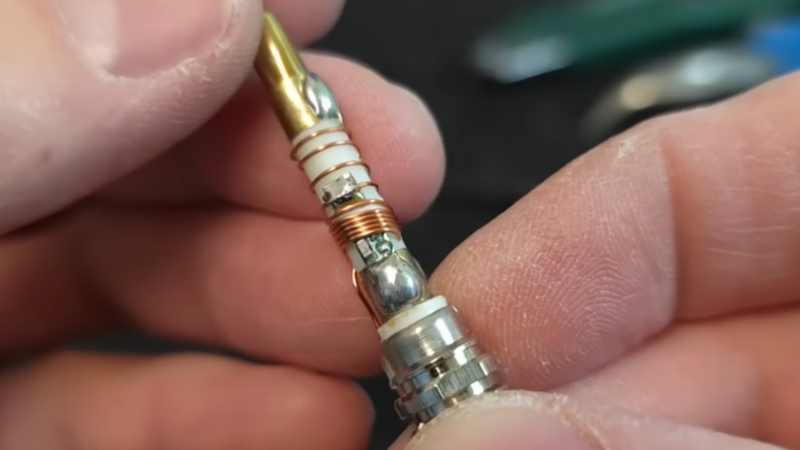
If you own a handheld transceiver of any type then the chances are it will come with a “rubber duck” style antenna. These flexible rubber-coated antennas are a compromise in performance, being significantly smaller than a wavelength at their frequency of operation. [OM40ET] has an interesting video in which he investigates this by tearing down a cheap rubber duck antenna and an even cheaper fake.
These antennas usually have a flexible upper section and a bulge at the bottom over the connector. The fake one has nothing in the bulge except the antenna wire and thus has a very high SWR, while the “real” one has a loading coil. This coil is an interesting design, because it’s designed such that the antenna has two resonant points at the 2 metre and 70 centimetre amateur bands. On paper it’s a tapped coil fed at the tap through a capacitor for matching, but a more detailed appraisal will tell you that the two halves of the coil are designed to return those two resonances. It’s still a not-very-good antenna, but the fact that it works at all is something.
If you want something better at VHF and haven’t got much space, all is not lost. We recently featured a VHF magnetic loop.
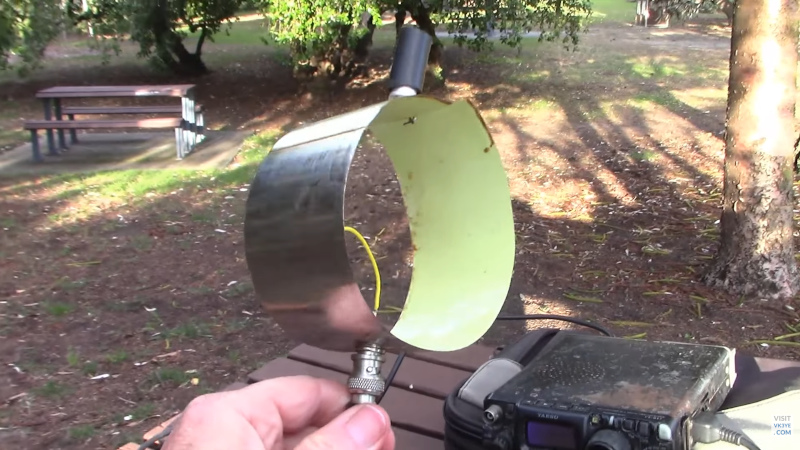
The magnetic loop antenna is a familiar sight in radio amateur circles as a means to pack a high performance HF antenna into a small space. It takes the form of a large single-turn coil made into a tuned circuit with a variable capacitor, and it provides the benefits of good directionality and narrow bandwidth at the cost of some scary RF voltages and the need for constant retuning. As [VK3YE] shows us though, magnetic loops are not limited to HF — he’s made a compact VHF magnetic loop using a tin can.
It’s a pretty simple design; a section from the can it cut out and made into a C shape, with a small variable capacitor at the gap. The feed comes in at the bottom, with the feed point about 20 % of the way round the loop for matching. The bandwidth is about 100 MHz starting from the bottom of the FM broadcast band, and he shows us it receiving broadcast, Airband, and 2 meter signals. It can be used for transmitting too and we see it on 2 meter WSPR, but we would have to wonder whether the voltages induced by higher power levels might be a little much for that small capacitor.
He’s at pains to point out that there are many better VHF antennas as this one has no gain to speak of, but we can see a place for it. It’s tiny, if you’re prepared to fiddle with the tuning its high Q gets rid of interference, and its strong side null means it can also reduce unwanted signals on the same frequency. We rather like it, and we hope you will too after watching the video below.
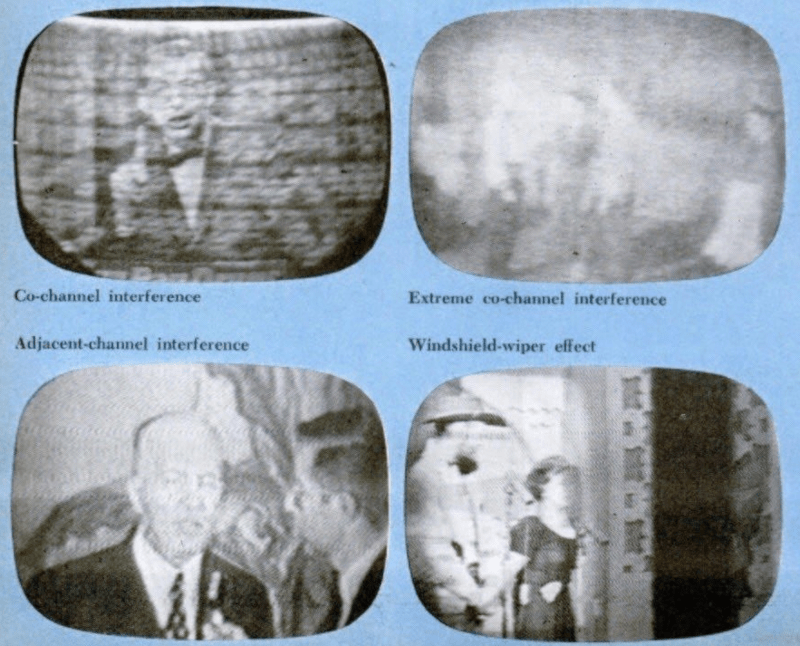
Unless you are over a certain age, you probably take it for granted that electronic gadgets you buy have some FCC marking on them. But it wasn’t always true. [Ernie] submits that the FCC’s regulation of the computer industry was indirectly the result of the success of CB radio in that same time period.
Today, there is a high chance you don’t watch TV directly over the airwaves or even consume audio from a traditional radio station. Even if you do, the signal is increasingly likely to be digital. But only analog radio and TV were highly susceptible to interference. When a professional radio station or the power company interfered with you watching I Love Lucy, you could count on them to resolve it. Even ham radio operators, a small segment of the population, would, in general, graciously help you if their transmissions interfered with your equipment.
Never mind that, in many cases, it was the cheap TV or some other problem on the receiving end. Then there was another source of potential interference: CB radio. At first, you were about as likely to encounter a CB operator as a ham radio operator. But then in the 1970s, CB exploded, becoming a cultural phenomenon, and you can hear what a state it was in by watching the contemporary TV report in the video below.
This explosion of operators who did nothing more than apply for a license (if they even bothered to do so) and bought their equipment at a local store had no idea how to help curb interference, even if they wanted to. In 1977, the AP reported that 83% of the FCC’s TV interference complaints involved CB radio.
Early computers were also very noisy on the radio bands. So much so that early attempts at computer audio output were simply modulating the radio frequency interference. Again, at first, this wasn’t a huge problem. But as computers became more common, so did computer-related interference, and the FCC didn’t want to deal with another CB radio-style explosion.
The rest is, as they say, history, and [Ernie] covers it all in the post. Getting a product approved by the FCC isn’t trivial, but if you have to do it, we have some advice.

De Icom IC-905 is het broertje van de IC-705 en gemaakt voor het SHF bereik (1,2 GHZ tot 10 GHz) en over de ontwikkeling ervan schreef Icom een interessant en 42 pagina’s tellend artikel. Dit kun je HIER downloaden.

Any radio amateur will tell you about the spectre of TVI, of their transmissions being inadvertently demodulated by the smallest of non-linearity in the neighbouring antenna systems, and spewing forth from the speakers of all and sundry. It’s very much a thing that the most unlikely of circuits can function as radio receivers, but… teeth? [Ringway Manchester] investigates tales of musical dental work.
Going through a series of news reports over the decades, including one of Lucille Ball uncovering a hidden Japanese spy transmitter, it’s something all experts who have looked at the issue have concluded there is little evidence for. It was also investigated by Mythbusters. But it’s an alluring tale, so is it entirely fabricated? What we can say is that teeth are sensitive to sound, not in themselves, but because the jaw provides a good path bringing vibrations to the region of the ear. And it’s certainly possible that the active chemical environment surrounding a metal filling in a patient’s mouth could give rise to electrical non-linearities. But could a human body in an ordinary RF environment act as a good enough antenna to provide enough energy for something to happen? We have our doubts.
It’s a perennial story (even in fiction), though, and we’re guessing that proof will come over the coming decades. If the tales of dental music and DJs continue after AM (or Long Wave in Europe) transmissions have been turned off, then it’s likely they’re more in the mind than in the mouth. If not, then we might have missed a radio phenomenon. The video is below the break.

The first transistors were point contact devices, not far from the cats-whiskers of early radio receivers. They were fragile and expensive, and their performance was not very high. The transistor which brought the devices to a mass audience through the 1950s and 1960s was the one which followed, the alloy diffusion type. [Play With Junk] has a failed OC71 PNP alloy diffusion transistor, first introduced in 1957, and has cracked it open for a closer look.
Inside the glass tube is a small wafer of germanium crystal, surrounded by silicone grease. It forms the N-type base of the device, with the collector and emitter being small indium beads fused into the germanium. The junctions were formed by the resulting region of germanium/indium alloy. The outside of the tube is pained black because the device is light-sensitive, indeed a version of this transistor without the paint was sold as the OCP71 phototransistor.
These devices were leaky and noisy, with a low maximum frequency and low gain. But they were reliable and eventually affordable, so some of us even cut our electronic teeth on them.